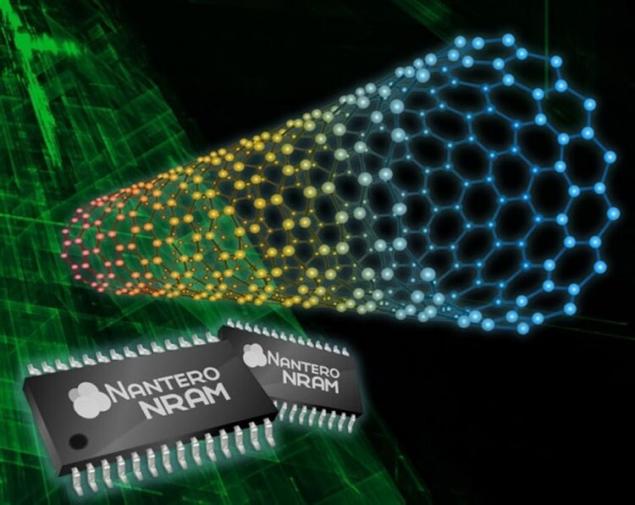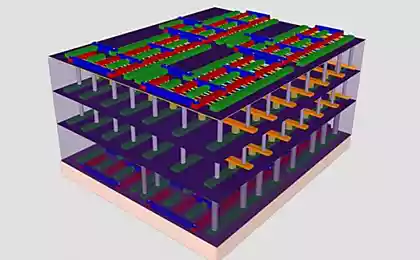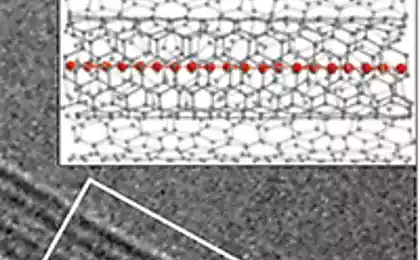524
In 2018, Fujitsu will release a "flash memory" using carbon nanotubes.
Fujitsu's Mie Semiconductor and Fujitsu Semiconductor announced that they have acquired the license for the development and commercial release of the non-volatile memory using carbon nanotubes. — NRAM. The most remarkable thing in this news is the timing to market commercial products to new and unusual basis. The production of NRAM memory starts in 2018!

In the first stage memory NRAM in blocks of embedded nonvolatile memory will arm processors, microcontrollers and other complex circuits. Will employ process technology with the norms of 55 nm with a subsequent transition to 40-nanometer production rates. In the second phase, Fujitsu will start the production of independent circuits NRAM, then we should expect the appearance of the respective non-volatile memory modules and SSDs.
A number of properties of NRAM hints that in the future this type of memory could replace both flash memory and DRAM memory. The speed of access to the cell NRAM during recording only 5 NS, and the switching speed is less than 20 PS. Resistance to wear from NRAM simply enormous — cell carbon tubes can withstand up to 1012 write cycles.

The secret to high reliability is in essence a memory NRAM. A key layer in the cell is an array of hundreds of carbon nanotubes, intertwined in an arbitrary way. One control voltage deforms the nanotube, which occurs conductive chain, and another voltage causes the reverse warping, disconnecting the circuit.

Memory NRAM more than 15 years of experience in developing the American company Nantero. In 2006 Nantero has received patents on production technology NRAM in the ordinary CMOS process technology on silicon wafers. In 2015 the process run on the real production and began to spread through licensing. At the moment the technology Nantero show interest in 12 companies, some of which are representatives of the 10 largest manufacturers of memory. Fujitsu already has a rich experience in the production of unusual memory FeRAM, promises to be the first manufacturer to master the production of memory on carbon nanotubes. published
P. S. And remember, only by changing their consumption — together we change the world! ©
Source: www.3dnews.ru/938815

In the first stage memory NRAM in blocks of embedded nonvolatile memory will arm processors, microcontrollers and other complex circuits. Will employ process technology with the norms of 55 nm with a subsequent transition to 40-nanometer production rates. In the second phase, Fujitsu will start the production of independent circuits NRAM, then we should expect the appearance of the respective non-volatile memory modules and SSDs.
A number of properties of NRAM hints that in the future this type of memory could replace both flash memory and DRAM memory. The speed of access to the cell NRAM during recording only 5 NS, and the switching speed is less than 20 PS. Resistance to wear from NRAM simply enormous — cell carbon tubes can withstand up to 1012 write cycles.

The secret to high reliability is in essence a memory NRAM. A key layer in the cell is an array of hundreds of carbon nanotubes, intertwined in an arbitrary way. One control voltage deforms the nanotube, which occurs conductive chain, and another voltage causes the reverse warping, disconnecting the circuit.

Memory NRAM more than 15 years of experience in developing the American company Nantero. In 2006 Nantero has received patents on production technology NRAM in the ordinary CMOS process technology on silicon wafers. In 2015 the process run on the real production and began to spread through licensing. At the moment the technology Nantero show interest in 12 companies, some of which are representatives of the 10 largest manufacturers of memory. Fujitsu already has a rich experience in the production of unusual memory FeRAM, promises to be the first manufacturer to master the production of memory on carbon nanotubes. published
P. S. And remember, only by changing their consumption — together we change the world! ©
Source: www.3dnews.ru/938815
How to increase the responsibility of adolescents for their studies
The same Paris through the eyes of different people























